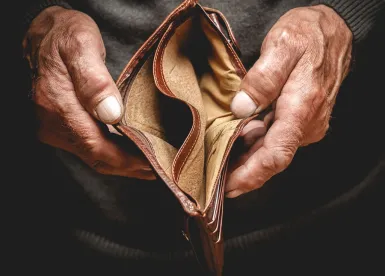In a 2014 blog post about the Dinesh D’Souza case, we speculated that it might have been one of the first “straw donor” cases identified based on automated analysis of campaign finance disclosure reports. It’s not clear that was actually the case, though the Department of Justice did say at the time that “the indictment [of D’Souza] is the result of a routine review by the FBI of campaign filings with the FEC.” There has since been considerable debate about exactly how routine that review really was.
Straw donor schemes are surprisingly common. Such schemes involve an individual who has made the maximum donation to a campaign and who seeks to circumvent the contribution limit by funneling money through friends and family, causing FEC reports inaccurately to list those other persons as the true donors. Depending on the amount of money involved, this can be a criminal misdemeanor or felony offense. It is often not difficult to ferret out such schemes by closely reviewing or “data mining” disclosure reports filed by the campaigns with the Federal Election Commission.
There is a typical pattern to these cases. Often the person who initiates the scheme asks close family, friends, employees, or vendors to make contributions to the candidate, and then reimburses them for their contributions. The employees and vendors might include individuals with modest salaries who nonetheless all make the maximum contribution of $2,700 per election or $5,400 per election cycle (current limits). On FEC reports, they will all show up as having contributed around the same time, in the same significant amount. Some may list the same “employer” when they make their contribution, as reported on FEC reports. They may be associated with a common address. Some may list occupations that would not be typical for major political donors. So with a bit of diligence and old fashioned gumshoe detective work, or with the aid of a computer algorithm, it is not rocket science to look for patterns in FEC reports that suggest the identity of the person perpetrating the straw donor scheme.
Given the tens of thousands of federal, state, and local campaigns across the country, there are probably many more such straw donor schemes than you read about in the newspapers. Only a small number are detected and actually prosecuted. When they are prosecuted, they often do result in criminal convictions for the perpetrator of the scheme, though often not for the persons who act as conduits for the contributions. Courts have varied widely in the severity of sentences imposed, sometimes imposing prison sentences, and sometimes not.
Given the public nature of campaign finance disclosure reports, it is a bit of a puzzle why there are not more prosecutions related to straw donor schemes. One likely explanation is the “glass houses” effect. While campaigns do aggressive opposition research on one another, and uncovering an opponent’s use of straw donors could provide grist for filing a highly public complaint, there is always the risk that the opponent would take a close look at the complainant’s own campaign donors, which might also include a straw donor or two (or quite a few). So campaigns tend not to include this in their opposition research arsenal, perhaps to avoid mutually assured destruction.
Meantime, for anyone who is politically active, the main takeaway is that it is illegal to reimburse political contributions made by others, and it is not difficult for a diligent adversary, journalist, or law enforcement agency to pick you out of the haystack and trigger an investigation.




 />i
/>i

